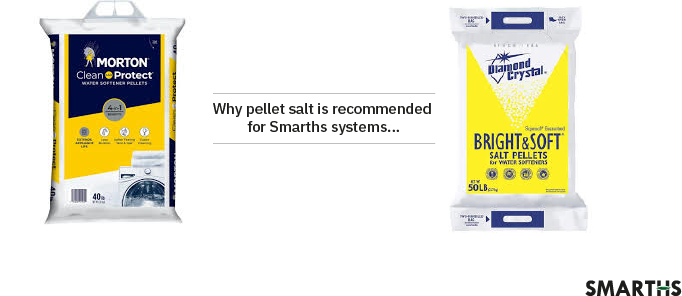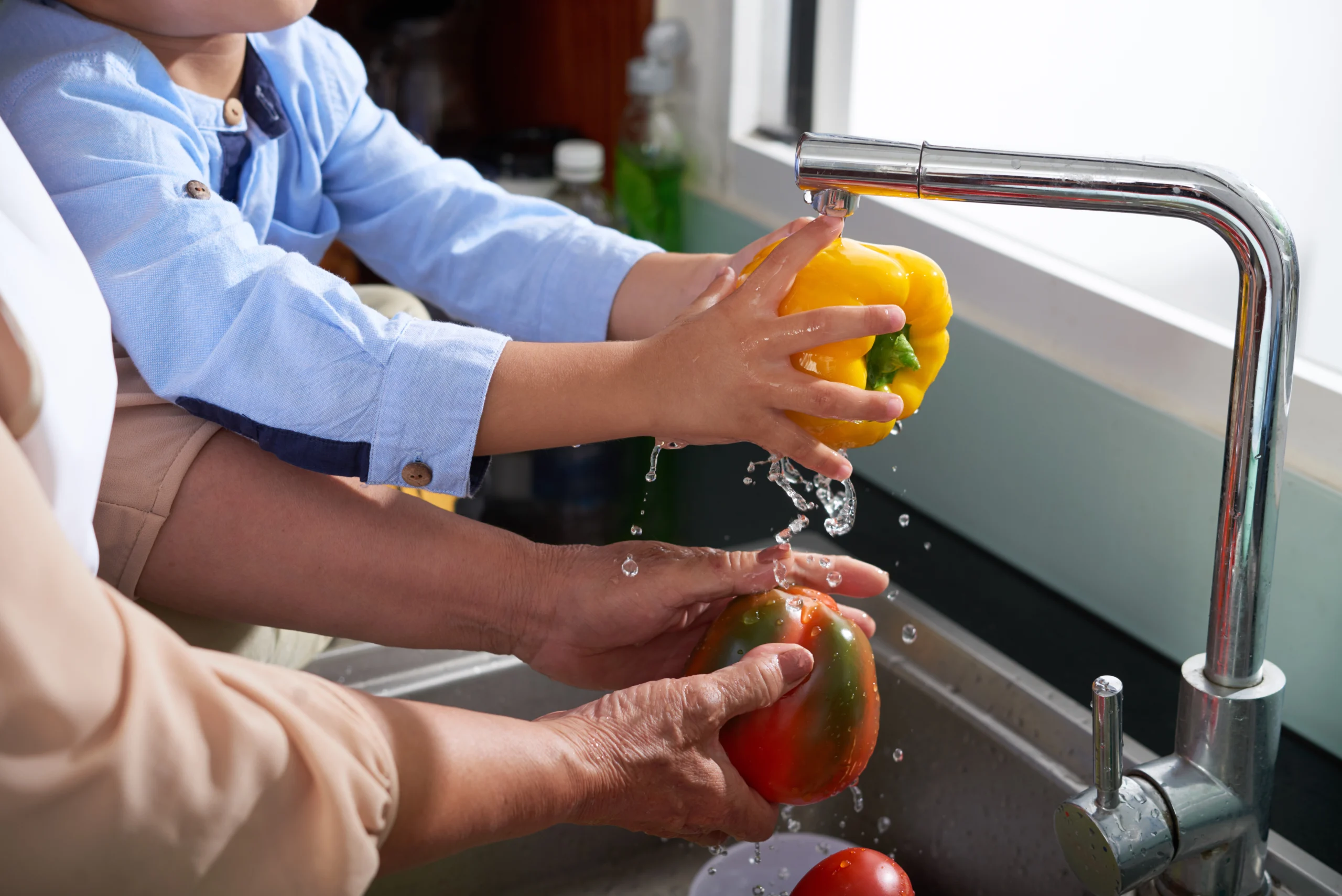The Ultimate Guide to Using Pellet Salt for Your Smarths TR-1 and WR-1 Water Filtration Systems
Water filtration and softening systems like the Smarths TR-1 (single tank) and WR-1 (dual tank) are powerful solutions designed to deliver high-quality, softened water throughout your home. But to maintain their performance and efficiency, it’s crucial to use the correct type of salt. In this guide, we’ll explore why pellet salt is the optimal choice, how to properly maintain your brine tank, and key tips to maximize the life and performance of your Smarths system.
Why Pellet Salt is Recommended for Smarths TR-1 and WR-1 Systems
Smarths systems are engineered with advanced Smart Valve Technology that ensures efficient regeneration and minimal water and salt consumption. However, using the right salt type is vital to maintain that efficiency. Pellet salt, especially high-purity pellets like Diamond Crystal Bright & Soft or Morton Clean & Protect, offers several advantages:
- High Purity (99% or higher): Reduces the amount of insoluble material left behind.
- Less Bridging and Mushing: Pellet salt minimizes the risk of salt bridging (hard crust formation) and mushing (sludge formation) inside the brine tank.
- Consistent Dissolving Rate: Ensures even brine concentration during each regeneration cycle.
- Protects System Components: Less residue means less wear and tear on your control valve, injectors, and other internal parts.
Using rock salt, solar salt, or other lower-grade salts can lead to bridging, clogs, reduced efficiency, and costly repairs.
Comparing Popular Pellet Salt Brands
Here are two popular pellet salt options compatible with Smarths TR-1 and WR-1 systems:
| Brand | Product | Bag Weight | Purity | Special Features |
|---|---|---|---|---|
| Diamond Crystal | Bright & Soft | 40.69 lb | 99.9% | Two-handle bag, NSF Certified |
| Morton | Clean & Protect | 44 lb | 99.9% | 4-in-1 formula for appliances, skin, buildup reduction |
Both are widely available at major retailers like Home Depot, Lowe’s, and Sam’s Club. Always check for NSF certification and high purity rating when selecting your salt.
How Much Salt Should Be in Your Brine Tank?
A very important maintenance practice for TR-1 and WR-1 users is to keep the salt level at approximately 65% of the tank height.
Why 65%?
- Prevents excessive weight compacting the salt at the bottom.
- Allows proper water flow around salt pellets for complete dissolving.
- Minimizes risk of bridging or salt mushing.
- Ensures proper brine concentration during regeneration.
Never overfill your brine tank. Keeping the salt level above 65%-70% can cause serious problems over time.
Signs Your System May Have Salt Issues
Even if you’re using high-quality pellet salt, occasional issues can still arise. Be aware of these warning signs:
- Water feels hard despite recent regeneration.
- Low salt level but undissolved salt crust remains.
- Water softener continuously running or failing to regenerate.
- Brine tank water level higher than normal.
If you experience any of these, inspect your brine tank for:
- Salt bridges: Solid crust forming above water level.
- Salt mushing: Sludge-like material at the bottom of the tank.
- Clogs in the float assembly or brine line.
How to Properly Add Salt to Your Smarths TR-1 and WR-1
- Check salt level monthly (more often during high usage seasons).
- Add pellet salt until reaching ~65% tank height.
- Avoid pouring new salt on top of compacted or hardened old salt.
- If necessary, gently break any crust or bridge before adding more.
- Use clean, dry hands or tools to avoid contamination.
How Much Salt Will You Use?
The exact salt consumption varies depending on your water hardness, household size, and water usage. Here are general estimates for Smarths systems:
| Household Size | 2 – Months Salt Usage |
| 2-3 people | 40-60 lb |
| 4-5 people | 60-80 lb |
| 6+ people | 80-120 lb |
Note: Smarths TR-1 and WR-1 consume less salt per regeneration cycle compared to many traditional softeners due to their highly efficient valve technology.
Storage Tips for Pellet Salt
To maintain your salt quality:
- Store bags in a dry, covered area.
- Avoid humid garages or outdoor storage where bags can absorb moisture.
- Use older bags first (FIFO: first in, first out).
How Pellet Salt Helps Protect Your Investment
The TR-1 and WR-1 are long-term solutions for water quality, and proper salt usage protects that investment:
- Reduces service calls and maintenance costs.
- Maximizes resin bed lifespan.
- Preserves valve and injector function.
- Delivers consistently soft, high-quality water.
Skipping regular salt maintenance can lead to costly repairs, downtime, and water quality issues.
FAQ – Pellet Salt for Smarths TR-1 and WR-1
Q: Can I use rock salt instead?
A: No. Rock salt contains too many impurities, increasing risk of buildup and system problems.
Q: What if I accidentally overfill the brine tank?
A: Carefully remove some salt to bring the level back to 65%. Monitor for bridging or mushing over the following weeks.
Q: Can I mix different brands of pellet salt?
A: Yes, as long as both are high-purity pellets, but avoid switching between pellet and crystal or block salt.
Q: How often should I fully clean the brine tank?
A: Once a year is recommended for most households. Consult your Smarths service technician for full maintenance.
Final Recommendations
- Always use high-purity pellet salt (99%+ purity).
- Maintain salt level at ~65% of brine tank height.
- Perform monthly visual inspections.
- Schedule annual full service maintenance.
- Contact Smarths support if any irregularities occur.
By following these simple guidelines, your Smarths TR-1 or WR-1 system will continue delivering superior water quality for many years.
Need Salt or Maintenance?
Smarths offers convenient service plans, salt delivery options, and expert technical support to keep your system running at peak performance. Contact us today!




